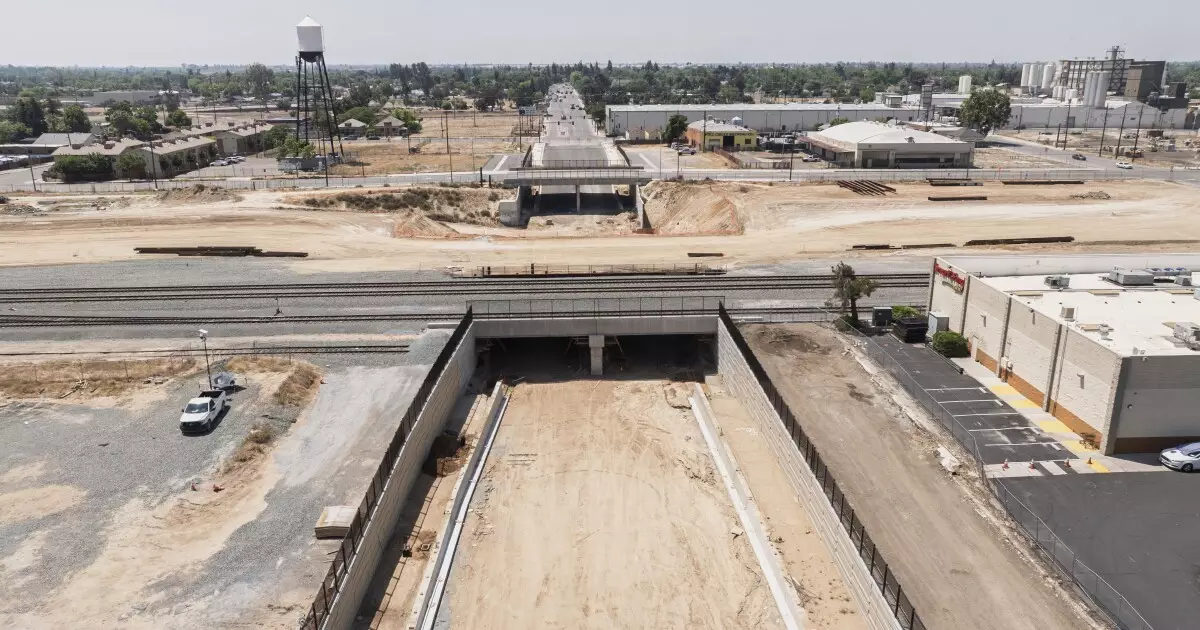When it comes to transformative public projects, California’s high-speed rail (HSR) epitomizes both ambition and controversy. Once envisioned as a leap towards modernizing transportation within the state, it has experienced the kind of turbulence that would make any project manager wince. Particularly under scrutiny from the Trump administration, the HSR authority continues to face numerous existential threats, particularly concerning federal funding. However, amidst the chaotic backdrop of political maneuvering and financial shortfalls, the project has demonstrably reshaped the Central Valley, making a compelling case for its continuation.
Instead of casting the HSR as a cash drain, it should be viewed as a necessary investment in infrastructure that, despite its challenges, stands to benefit millions in the long run. The project’s initial budget was estimated at $33 billion, but criticisms have scrutinized its bloated current projection of $128 billion. Yes, the cost is egregious, but this boils down to fundamental issues with government expenditure and planning rather than a definitive rejection of the project itself. It’s essential to refocus public discourse on the HSR’s potential rather than its mismanagement, drawing attention to the thirty active construction sites facilitating both jobs and economic growth.
Unraveling the Red Tape
The Federal Railroad Administration (FRA) recently made headlines by suggesting that endless delays and budget overruns could lead to a termination of its $4 billion federal grants. While their concerns aren’t unfounded, it’s critical to acknowledge the tortuous red tape that public projects often endure. California High-Speed Rail Authority CEO Ian Choudri aptly argues that the FRA’s accusations stem from a misinterpretation of the progress made. Should we really jeopardize a project that promises job creation and reduced commute times over bureaucratic nitpicking?
Choudri’s argument merits attention: the authority has avenues to address its financial issues, including tapping into California’s cap-and-trade revenues, which would supplement state and private investments. The mere existence of innovative funding strategies highlights a potential will to change. Governor Gavin Newsom’s cap-and-trade proposal is optimistic, projecting an annual revenue stream of at least $1 billion through 2045. If leveraged wisely, this could catalyze the high-speed rail’s completion and redefine state investment in transportation.
A Polling Perspective
Despite the backlash and slippery slope of financial uncertainties, a sizable 67% of registered California voters still support the high-speed rail project. Their backing should be considered a wake-up call to lawmakers who often overemphasize criticisms. When polls show such overwhelming support, it’s an indication that the public recognizes the potential for improved connectivity between major metropolitan areas. Politicians should heed the grassroots optimism and reconsider their stances accordingly.
Interestingly, California’s political landscape is largely viewed through a dichotomy of extremes, but this project has found some common ground among voters. The support for HSR cuts across various demographics, even within traditionally conservative voting pools. Clearly, the desire for improved transportation options transcends the political spectrum and underscores the need for an effective, bipartisan approach.
The Future is Creative Funding
Realigning HSR’s future requires both innovative thinking and creative funding mechanisms. The recent bill passed by the California Senate is a promising step, as it investigates alternative funding channels—essentially reimagining the financing of such grand projects. A broad assessment of various funding mechanisms could unlock revenues previously thought unattainable. More importantly, it serves as an acknowledgment that infrastructure is a priority that deserves comprehensive financial solutions.
Choudri’s strategic outreach for potential public-private partnerships could introduce even more innovative solutions, promoting the notion that the HSR is not merely a government endeavor but a collaborative effort. This relationship can be transformative, providing greater flexibility in financing while also alleviating the burden on taxpayers.
In light of these insights, it’s important to combat cynicism with well-thought-out strategies and unwavering support for this essential infrastructure project. After all, the high-speed rail isn’t just about faster commutes; it’s about creating a visionary future for California that can lead other states toward more sustainable transportation solutions.

